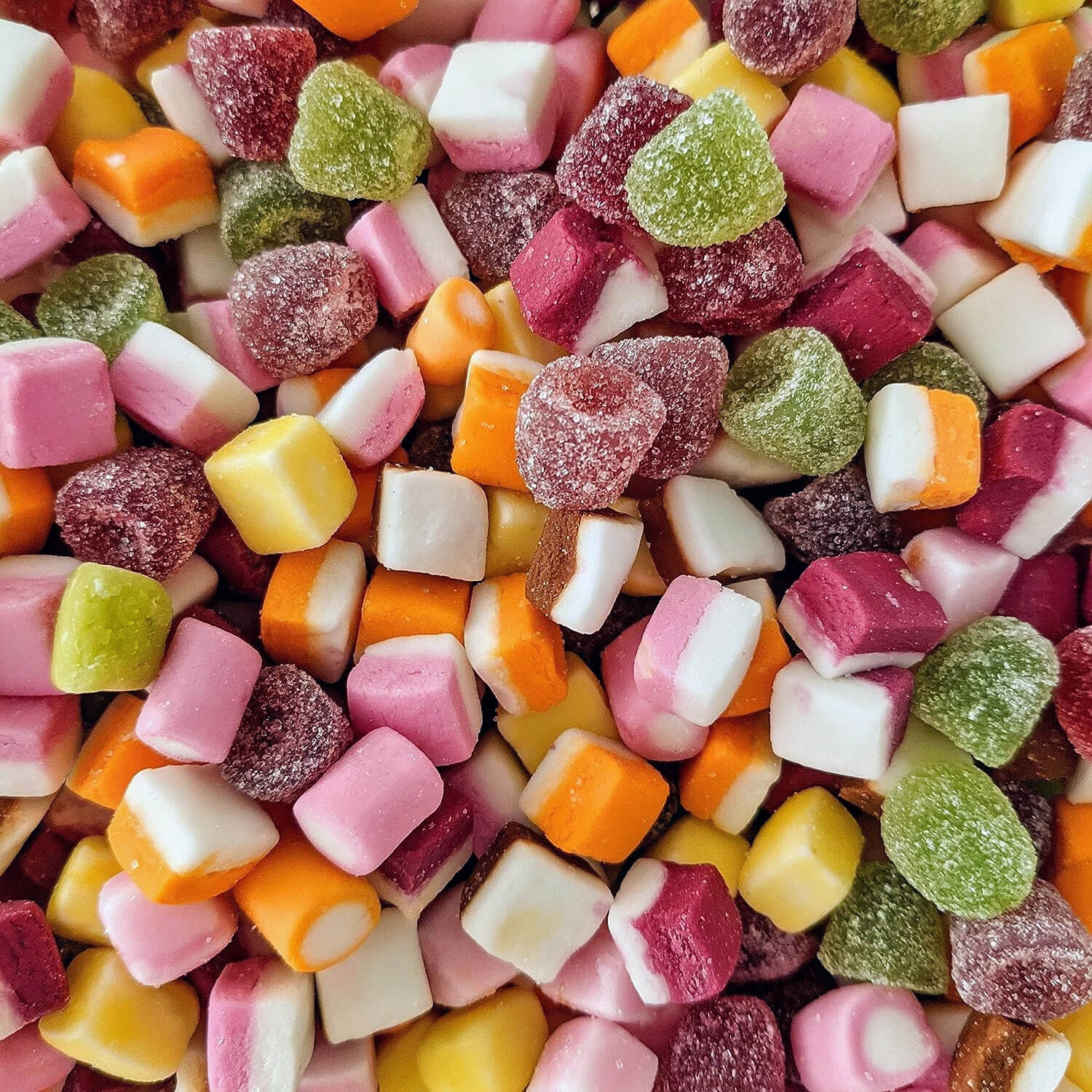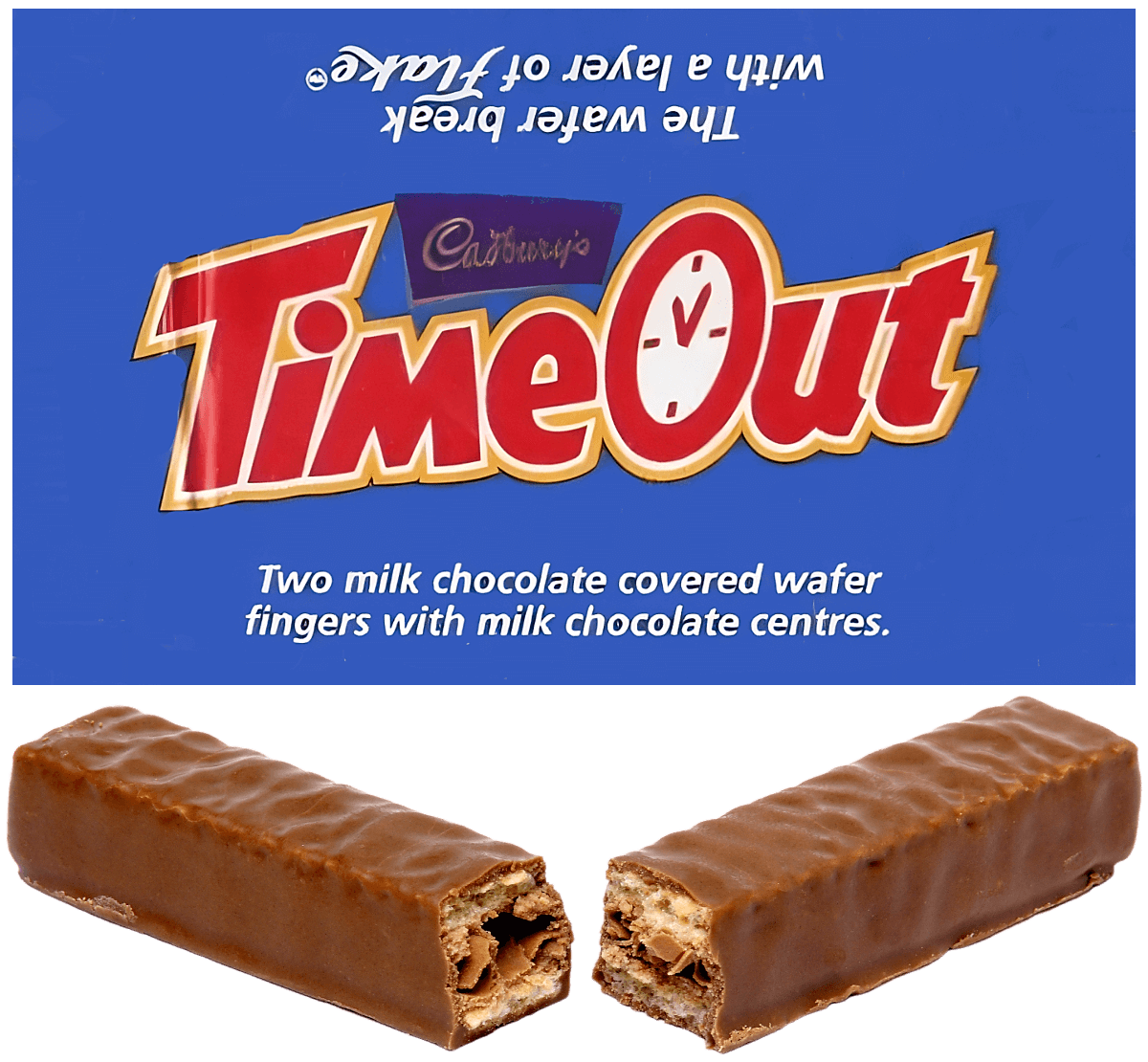A Brief History of Sweets and Chocolate
Hop on board the Facts About Sweets time machine, where we take you on a brief but fascinating journey through the history of sweets and chocolate, using our convenient timeline...
4000 BC saw the birth of chocolate, which originated in Latin America. It all started in Mesoamerica, which is the home of nativa cacao tree and called Mexico today. The first civilization was the Olmec, and they were also the first to experience chocolate, although it was very different to what we enjoy today. They drank a crude, almost unpalatable chocolate drink during rituals, and also used it as a medicine. Around 3000 years ago, the ancient Mayans also cultivated cocoa beans to make a bitter chocolate drink.
The word chocolate comes from the Latin "xocolatl”, meaning “bitter water.” The drink was eventually sweetened and enhanced with flavourings to make it more palatable, although this would take another 1500 years!
2000 BC - Sweets were invented by the ancient Egyptians, around this time. They combined nuts, fruits (such as dates and figs) and honey to create tasty sweet candy treats. The Aztecs used cocoa beans as a currency in the 15th century.
1600 - The exact date isn't known, but it was around the early 1600s when chocolate was introduced to England as a drink. It remained a drink until the 19th century. Imports of Cacao from Spain arrived on ships.
1650 is the year when cocoa was first advertised in England. Cirques Jobson opened the first coffee house in England (in Oxford) where he sold coffee and chocolate drinks.
19th Century
This was the century when revolutionary chocolate-making methods were invented, fuelling the mass production of chocolate and making it affordable for the masses. The earliest form of seaside rock is believed to have been sold at fair grounds (named Fair Rock) in the 19th Century, when sugar was plentiful and inexpensive, although it did not have the familiar bright colours, stripes or letters.
Although we call them sweets in the UK, in India the word refers to desserts, and in the U.S., they are known as candies. But during the 19th century, sweets were not just an indulgence, they were also sold as medicines (such as throat lozenges) and breath fresheners, as they still are today. This was also the century that children became the target audience for sweets, starting around the 1830s.
1819 - The mechanisation of chocolate making began in the 18th century. In 1819, the Swiss chocolatier François-Louis Cailler founded Cailler, and he opened a state-of-the-art chocolate factory that was powered by water, producing solid chocolate tablets.
1820 - The boiled sweets that we know and love today originated in the 19th century, and the price of sugar dropped as a result of their popularity. The process for making them dates back to around 1820, and boiled sweets eventually replaced crystallised fruits as the United Kingdom's favourite sweet snack.
1828 - Casparus van Houten Sr. patented his screw press, which pressed the fat from roasted cocoa beans, reducing the cocoa butter by around 50%. His son Coenraad van Houten is often wrongly credited as the inventor.
1847 - The modern chocolate bar was invented by Joseph Fry. The English chocolatier is credited for producing the first mass-produced chocolate bar. He discovered that adding melted cacao butter to Dutch cocoa allowed him to form a moldable paste. Before the advances in technology which led to mass production in the 19th century, chocolate was a luxury that only the rich could afford.
1849 - John Cadbury introduced his first chocolate bar. In the same year, J.S. Fry & Son began the mass production of chocolate bars at their factory in Bristol, England.
1853 - Fry's Cream Sticks were the introduced and were the first filled chocolate bar.
1862 - Rowntree's is founded by Henry Isaac Rowntree.
1866 - Fry's Chocolate Cream bar is introduced, which is still being produced today.
1879 - Chocolate became smoother after Rodolphe Lindt discovered the Conching process in 1879. This process evenly blends cocoa butter with cocoa solids and sugar, which produces a beautiful, smooth chocolate.

Dolly mixture is a delightful British sweet that dates back to the 1920s. It features a mixture of tiny, colourful fondant cubes and cylinders, and domed jelly sweets.
20th Century
Many of the chocolate bars and sweets we enjoy today were invented during the 20th century.
1905 - The most popular chocolate bar in the UK today is Cadbury's Dairy Milk, which launched in 1905.
1908 - Created by Theodor Tobler, the Swiss chocolate bar with triangular peaks is launched - Toblerone.
1909 - Maynard's launch their fruity gummy sweets Wine Gums, which did not contain actual wine.
1911 - Wrigley’s introduced its popular American chewing gums to Great Britain, Juicy Fruit and Spearmint Gum
1914 - Fry's launch their exotic Turkish Delight chocolate bar.
1918 - Fox's launch their clear Glacier Mints, an invention by Eric Fox.
1929 - J.S. Fry & Son launch their cinder toffee chocolate bar, Crunchie, which eventually became Cadbury Crunchie.
1932 - The Mars bar is launched, and we now consume around 600 million of them every year!
1935 - Rowntree's launched their four fingered chocolate wafer, Kit Kat, and the very first aerated chocolate bar, Aero.
1948 - Two iconic sweet brands are launched. Mars brought out Spangles, which became an iconic part of the 1970s. However, by the mid 1980s they had fallen out of favour and were discontinued. Rowntree's launched its Polo mint, which is still popular today.
1950s - Many new mass-produced chocolate bars were introduced during the 1950s, including Bounty (1951), Munchies (1957), Picnic (1958) and Caramac (1959), and all of these are still on sale in 2023.
1956 - William A. Mitchell invents popping candy by accident, while working on a self-carbonating soda drink tablet for General Foods.
1960 - Mars Galaxy is introduced, which is currently the second-best-selling chocolate bar in the UK. In the same year, Mars launched Opal Fruits, which became Starburst in 1991.
1963 - Nestlé launches it's new chocolate bar for children, Animal Bar.
1965 - Rowntree's launch their disc-shaped Jelly Tots, which are dome-shaped today.
1967 - Cadbury's launches the Aztec chocolate bar.
1969 - Ferrero launches Tic Tac, the tiny breath mint in a revolutionary plastic container.
1973 - Rowntree Mackintosh launch their iconic 70s toffee and nougat chocolate bar, Texan.
1974 - Skittles sweets are launched in the UK, which were produced by The Galaxy Company at the time. They are now one of Mars' most popular sweet brands.
1975 - There's a popping candy revolution with Space Dust Bonbons in the UK and Pop Rocks launching in the U.S. Mackintosh's Toff-o-Luxe become the much-loved toffee sweet TOFFO.
1976 - Rowntree's launch two manly chocolate bars aimed at men, Yorkie and Lion Bar, and Cadbury launches the Double Decker. Mars relaunched its Banjo chocolate bar in Peanut and Toasted Coconut flavours.
1978 - After just nine years of production, Cadbury announces the discontinuation of its Aztec chocolate bar.
1981 - Cadbury launches Wispa across the North East England as a rival to Rowntree's Aero. It was launched nationwide in 1983. It was replaced by Dairy Milk Bubbly in 2003, but was reintroduced in 2008 and remains popular today.
1988 - Nestlé acquire Rowntree's, which was the world's fourth largest confectioner at the time.
1990s - The 90s was a time for flavour experimentation, with many failures along the way. These included Cadbury Crunchie Orange, Wispa Mint, and Ice cream flavoured Chewits. It was also the decade that limited editions started becoming popular.
1991 - Mars cause controversy by changing the name of Opal Fruits to Starburst.
1992 - Cadbury's launched the TimeOut chocolate wafer, which contained two fingers and a layer of Flake chocolate. It was re-branded in 2016 and is now a single bar.
1998 - Nestlé Rowntree launches a five-fingered Kit Kat and orange and mint flavours, which were all short-lived.
21st Century
Since the new millennium in 2000, the choice of sweets and chocolates has expanded to levels that would have been unimaginable in the 19th century. There are currently over 200 major chocolate companies across the globe. As of 2023, the global chocolate is worth around £99 billion, which is quite staggering!
2009-2018 - Following the global recession in 2008, this period saw a collapse and then a stagnation in the volume of chocolate bars being manufactured in the UK. Production fell from over 106,000 kg in 2008 to a low of under 22,000 kg in 2012 and 2014.
2019-2022 - The recovery in chocolate sales begins, with over 75,000 kg being produced in 2019, compared to around 34,000 kg in 2018.
2023 - Mars launches Skittles Desserts, which are flavoured like your favourite puddings. In November 2023, Nestlé announced that is to cease production of Caramac and Animal Bar.
2024 - Nestlé launches its new Aero Choco Hazelnut bar in January 2024. Cadbury also introduced a new Creme Egg Bar to the UK for Easter.
Useful Links:
